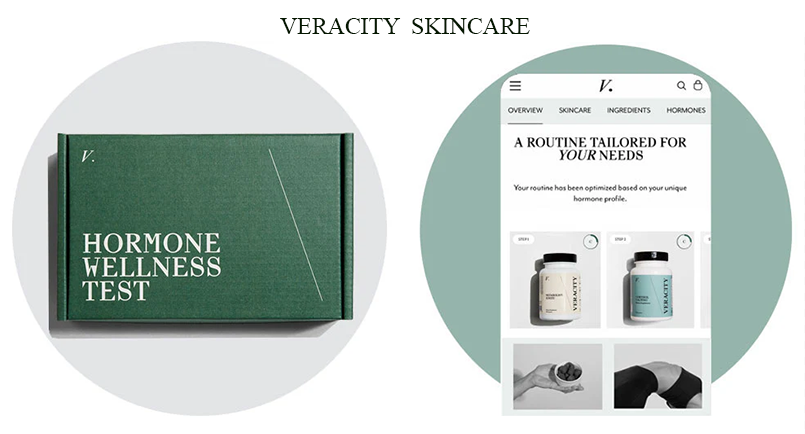
Stress doesn’t just affect your mood—it shows up on your skin, too. Cortisol, often called the “stress hormone,” can wreak havoc on skin sensitivity, making it more prone to redness, dryness, and irritation. If you’ve noticed that your skin flares up during tough times, cortisol is likely the culprit. Here’s how cortisol affects skin sensitivity and what you can do to keep your skin calm, even when life gets a bit bumpy.
Contents
Understanding Cortisol and Its Role in the Body
Cortisol is a hormone produced by the adrenal glands in response to stress. Its primary job is to help the body respond to threats by increasing alertness, energy, and the ability to handle physical or emotional stress. This “fight or flight” response is great in short bursts, but when stress becomes chronic, cortisol can stay elevated for longer periods, which is where the trouble starts—especially for the skin.
Why Chronic Cortisol Spikes are Bad News for Skin
When cortisol levels remain high, it signals the body to redirect energy from non-essential functions, like skin repair, to more “critical” areas needed for survival. Over time, this shift can weaken the skin barrier, deplete essential hydration, and trigger inflammation, all of which contribute to increased sensitivity.
Cortisol and the Skin Barrier
The skin barrier acts like a protective shield, keeping moisture in and irritants out. High cortisol levels weaken this barrier, making it more porous and prone to letting allergens, pollutants, and other irritants penetrate deeper. This is why stressed skin often feels itchy, dry, or inflamed—it’s struggling to keep the outside world at bay.
How Cortisol Increases Skin Sensitivity
High cortisol levels set off a chain reaction that can leave skin more sensitive and reactive. Here’s how cortisol impacts your skin on a deeper level and why this makes sensitivity worse.
Increased Inflammation
Cortisol is a pro-inflammatory hormone, meaning it can spark or worsen inflammation in the body. For the skin, this inflammation appears as redness, swelling, and sometimes even painful sensitivity. This is why people often experience flare-ups of conditions like eczema, psoriasis, and rosacea during stressful times. Cortisol aggravates these conditions, making the skin more reactive than usual.
Decreased Collagen Production
Collagen keeps skin firm, smooth, and resilient. However, cortisol breaks down collagen over time, making skin thinner and more vulnerable. When skin loses collagen, it becomes more sensitive to environmental factors like sun exposure, pollutants, and harsh products, which can lead to redness and irritation.
Moisture Loss
Another unfortunate effect of high cortisol is that it dehydrates the skin. Cortisol interferes with the skin’s natural ability to retain moisture, leading to a weakened skin barrier and increased water loss. This dehydration can make skin feel tight, itchy, and more prone to irritation. When skin is thirsty, it’s also less resilient, which can make sensitivity worse.
Signs Your Skin is Stressed Out
If you’re wondering whether stress and cortisol are behind your skin’s issues, look out for these tell-tale signs. They’re often red flags that your skin is feeling the effects of high cortisol levels.
- Redness: Sudden redness, especially in areas that are normally calm, can be a sign that cortisol-induced inflammation is at work.
- Dryness and Flakiness: When skin feels tight, dry, or flaky, cortisol may be interfering with your skin’s moisture retention.
- Breakouts: Cortisol can increase oil production, leading to clogged pores and breakouts, especially in the T-zone.
- Itchiness: Stress-induced dryness and barrier damage can make skin feel itchy and uncomfortable.
Skincare Tips to Soothe Stressed, Sensitive Skin
If cortisol is turning your skin into a sensitive mess, there are ways to help calm it down. Here are some tips to restore balance to your skin and reduce cortisol’s impact on sensitivity.
Use a Gentle Cleanser
When your skin is sensitive, the last thing it needs is a harsh cleanser that strips away natural oils. Look for a gentle, sulfate-free cleanser that won’t dry out your skin. Hydrating ingredients like glycerin and aloe are great choices to help soothe and cleanse without irritation.
Incorporate Soothing Ingredients
Soothing ingredients like chamomile, green tea, and aloe vera can calm inflammation and reduce redness. Products containing these ingredients can help counteract the effects of cortisol by calming the skin’s inflammatory response. These natural ingredients are also less likely to irritate already-sensitive skin.
Moisturize to Strengthen the Skin Barrier
Use a hydrating moisturizer that contains ceramides, hyaluronic acid, or squalane. These ingredients help rebuild the skin barrier, keeping moisture in and irritants out. A strong barrier is essential for protecting sensitive skin from external stressors.
Avoid Over-Exfoliating
Exfoliating too much can worsen skin sensitivity, especially when cortisol levels are high. Stick to gentle exfoliants, like lactic acid, and limit use to once a week if your skin is feeling reactive. Avoid physical exfoliants, like scrubs, as these can cause micro-tears and further irritate sensitive skin.
Lifestyle Habits to Manage Cortisol and Protect Your Skin
While a good skincare routine can help, managing cortisol levels requires a holistic approach. Here are some lifestyle tips to help keep cortisol in check, benefiting both your skin and overall well-being.
Prioritize Quality Sleep
Getting enough sleep is crucial for controlling cortisol levels. Aim for 7-8 hours of quality rest each night. Poor sleep increases cortisol, making skin more vulnerable to sensitivity and dryness. A regular sleep schedule can help keep cortisol balanced and prevent skin flare-ups.
Practice Mindfulness and Relaxation Techniques
Mindfulness practices like meditation, deep breathing, and yoga have been shown to lower cortisol. Just ten minutes a day of focused breathing or gentle stretching can reduce stress levels and improve skin health by keeping cortisol in check.
Eat a Balanced, Anti-Inflammatory Diet
A diet rich in antioxidants, omega-3 fatty acids, and vitamins can help reduce inflammation and support skin health. Foods like berries, leafy greens, nuts, and fish are great for keeping inflammation down and giving your skin the nutrients it needs to stay strong.
Exercise Regularly (But Don’t Overdo It)
Exercise can lower cortisol levels, but excessive high-intensity workouts may increase it temporarily. A balanced approach with regular, moderate exercise like walking, swimming, or cycling is best for reducing stress without spiking cortisol.
Top Ingredients to Avoid for Stressed, Sensitive Skin
When cortisol is high and your skin is feeling sensitive, certain ingredients can make things worse. Here are a few to steer clear of if you’re experiencing cortisol-induced skin issues.
- Alcohol: Found in many toners, alcohol can dry out the skin and weaken the barrier, making sensitivity worse.
- Fragrance: Fragrance ingredients are common irritants, especially for sensitive skin. Opt for fragrance-free products to avoid unnecessary irritation.
- Sodium Lauryl Sulfate (SLS): This harsh cleansing agent can strip the skin of natural oils, leading to dryness and sensitivity.
Stress may be an unavoidable part of life, but the effects of cortisol on skin sensitivity don’t have to be. By understanding how cortisol impacts the skin and taking steps to manage stress, you can protect your skin’s health and keep it looking calm and resilient, even during life’s tougher moments.

